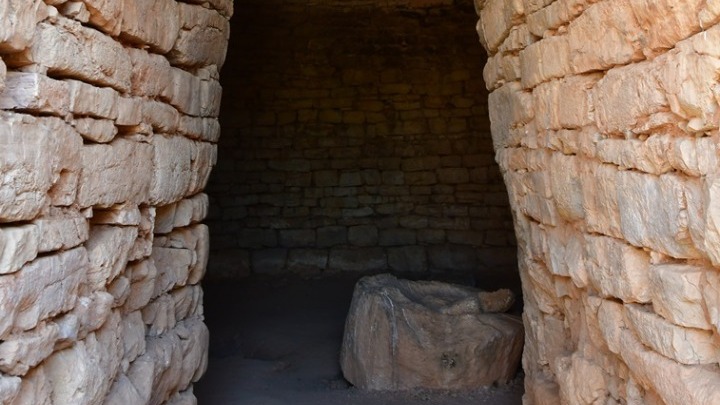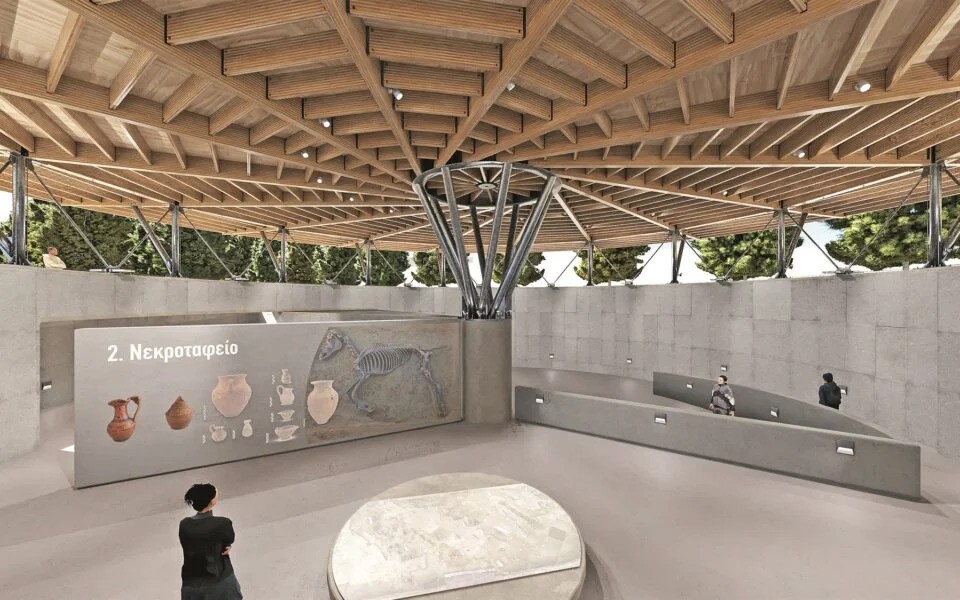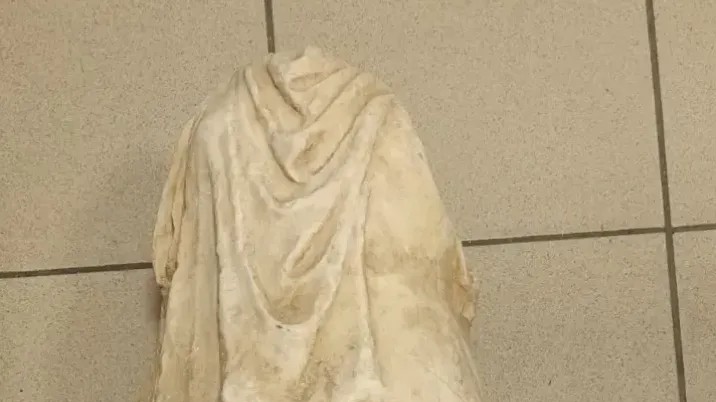Mycenaean tholos tomb near Karditsa to become open to the public, following approval of plans


Works to protect and promote the tholos tomb at Georgiko-Xinoneri in Karditsa – one of the best-preserved funerary monuments of the Mycenaean era in Thessaly – were approved by Central Archaeological Council, the Ministry of Culture said on Monday.
The Council approved the architectural and landscaping studies, and those for the electric engineeriing and fire protection studies.
According to a statement by the Ministry of Culture on Monday, the beehive-shaped tomb is in the area known as ‘Koufia Rachi’, about 5 km from Karditsa. Based on gradual removal of stones, which revealed very many small objects of clay and metal, archaeologists concluded that the area was used at later times as an “Ancestors’ Altar”.
Culture Minister Lina Mendoni described the site as follows, “The entrance way and greater part of the tholos tomb of Georgiko-Xironeri lie in an area of nearly 13,750 square meters and ownership was turned over to the Ministry of Culture by the former Mitropolis Municipality. The Georgiko tholos tomb is dated to 1400 BC. It is one of the few Mycenaean funerary monuments that have been identified and excavated in the Region of Thessaly that survives in such a good state of preservation.”
Archeological excavations began with the tomb’s discovery in 1917 and continued with the researches in 1957, Mendoni added. An extensive excavation took place 1997-1999.
Visitor plans
“The tomb’s protection and landscaping are being accompanied by interventions supporting the slopes, lighting to highlight the monument and the visitor paths. With the planned interventions, the monument will be protected and promoted and made accessible to all public groups. Visitors wil be able to visit the interior of the monument and walk around the surrounding area, where information material will be available. For those who have trouble accessing the interior, they will be able to take a virtual 3D tour of the premises,” Mendoni said.
According to the Culture Ministry, the interventions foreseen in the site revolve around two basic things: a. The visitors’ path and b. the planning of auxiliary facilities (guardhouse, storage, WC) for visitors and staff alike. Provision will be made through a ramp for people with disabilities at the site and at the auxiliary facilities (including a separate WC for them).
In addition, the archaeological site will include a permament water network for firefighting purposes, supplied by a subtarranean water reservoir and pumping system. Other installations will include air conditioning, fire alarms, protection from lightning, and drainage for waste and rainwater, the ministry said.
Source: AMNA




